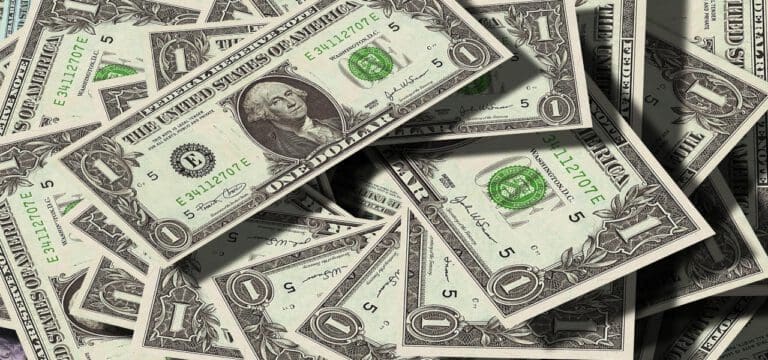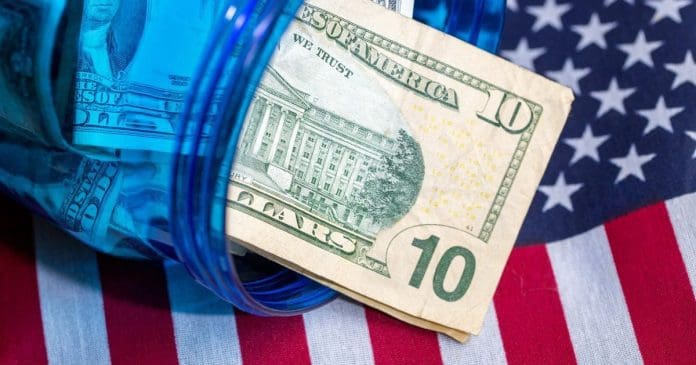What began as a trickle of inflation relief to state residents is now turning into a flood as more states move in with stimulus checks for residents. Many states including Maine and New Mexico have already sent relief payments to residents while California and Florida have announced that they are moving ahead with support measures for their residents.
Though the extent and coverage of the stimulus checks have differed, what stands out as a common thread among all states is the record inflation that threatens to derail the brief economic recovery experienced in the last two quarters of 2021.
Inflation A Result Of Combining Factors That Include Stimulus Checks
America was buoyed up by the $5 trillion avalanche of funds transferred from the federal government directly to businesses and households between 2020 and 2021. Around $1 trillion was transferred to personal bank accounts through the series of stimulus checks, the extended and the Child Tax Credit stimulus checks.
The payments coincided with an increase in prices across the entire American economy and within a week, inflation was creeping up at a rate that had never happened before. It immediately drew a direct cause-and-effect link between the events.
But any connection between the record inflation that Americans are facing today and the largest ever injection of cash by the federal government into the American economy. But the issue is way more complicated than that and linking inflation directly to the stimulus checks is unfair and unjust.

Error In Distribution Of Stimulus Funds Led To Money Reaching The Undeserving
This is just what happened during the past year. The infusion of stimulus check money reached people who were in dire need of it. But at the pace at which the whole operation was carried out, it was inevitable that there would be errors.
A large section of the population was left out of the benefits, including the very poor, Blacks, and Latinos, even though the whole setup was targeted to benefit specifically such communities. There were significant disparities in ethnicity, race, family citizenship, and income. While 74% of the white community received the stimulus checks, it went down to 69% for blacks and nearly 64% for the case of Hispanics.
There were various reasons cited for the disparity. While a large section of such communities had no bank account, others lacked internet access. Some adults among the Latinos became ineligible as they or their spouses were undocumented and did not qualify as US residents.
On the flip side, a considerable percentage of the amount in all three rounds went to people who did not deserve the money as their income was not affected by the pandemic.
This led to an excess amount in the hands of a section of the population. They spent this excess amount on non-essential goods which were partially responsible for upsetting the demand-supply balance and led to an increase in the price of goods. This was one of the reasons for the high inflation rate that has persisted to this day.
Stimulus Check Fueled Inflation, But Only Part Of It
Any economic expansion has inflation as a natural and normal side effect. Businesses hire more workers as they expand in an expanding economy. There is a drop in unemployment and people have excess money to spend. This leads to an increase in the demand for goods and services, which in turn leads to a spurt in the price of such goods.
The economic impact of the pandemic was abnormal and unnatural, and so was the inflation rate which climbed to a record high of 9.1%, the highest since November 1981. While in a normal economic environment money flows in and out at a slow pace. So it was expected that suddenly pumping trillions of dollars into the economy through stimulus checks and direct payment to businesses, and local and state governments would upset the fine balance.
Prices went up suddenly and the payments were partially responsible but never completed as the Republicans have claimed, understandably in an election year. The most reliable estimation comes from the San Francisco Federal Reserve which has pegged the rise at 3 percentage points. That is approximately the difference that the US has with other developed economies in Europe and the UK, countries that have not issued direct stimulus checks but have experienced high inflation rates.
Multiple Issues That Led To Price Rise
Despite claims to the contrary by the Republicans, economists agree that there were multiple reasons for the high inflation that has come to define the economy in the past year and a half. And most of the reasons were linked to the pandemic in the first place.


The shutdown of the economy almost totally was a significant reason for the economic downturn. The pandemic was an unprecedented event in modern human history as the whole world economy had not shut down even during the Second World War.
Factories shut down and the whole supply chain was thrown in disarray. Products that required components from around the world to manufacture, such as vehicles, faced a massive disruption in production which led to an increase in the price of goods.
The war in Europe was another significant factor. Russia is the third-largest producer of oil and gas in the world and sanctions against it hurt world oil prices more than they did on the former Soviet Union nation. It led to an overall spike in the cost of both manufacturing and shipping.
And finally, there was the vital issue of labor shortage. Many US factories had to either slow down production or shut down operations totally due to a shortage of labor. And this happened at a time demand for goods was spiking.
There was some direct link between the stimulus checks and high inflation as proved by the fact that nations that did not give stimulus checks were not affected to that extent by inflation.
In the end, the money supply in the economy was too high, and its purchasing power naturally fell drastically leading to high costs. But it was also aggravated by the pandemic, rising production costs due to a shortage of labor, and disruption in supplies. Another reason that contributed to this mess was the high oil prices.
In such a scenario, state stimulus checks sent by close to 20 states have set alarm bells ringing as economists warn of a further spike in the inflation rate. California and Florida are among the states to join the list. While the number of stimulus checks has varied, most are linked to the AGI in the 2021 tax returns and the duration of state by residents in their states.






